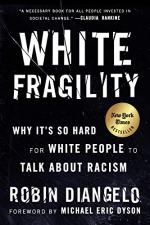|
This section contains 1,139 words (approx. 3 pages at 400 words per page) |

|
Summary
The author states that while no one today admits to being racist, racism still exists. Racism has changed forms over time and has adapted to cultural change. Many whites believe that if we don't see race, racism can't exist. They were motivated to be color blind in part by the line in Martin Luther King's famous "I Have a Dream" speech that he hoped not to be judged by the color of his skin one day. Whites believe that if they don't notice people's skin color, racism has ceased to exist. Being color blind makes it impossible to acknowledge the very real difference in people's experiences based on race. Racial bias often operates on the subconscious level, and therefore when whites are charged with being racist, they are often defensive about it. This is one form of white fragility.
As whites often don't acknowledge...
(read more from the Chapter 3 Summary)
|
This section contains 1,139 words (approx. 3 pages at 400 words per page) |

|




